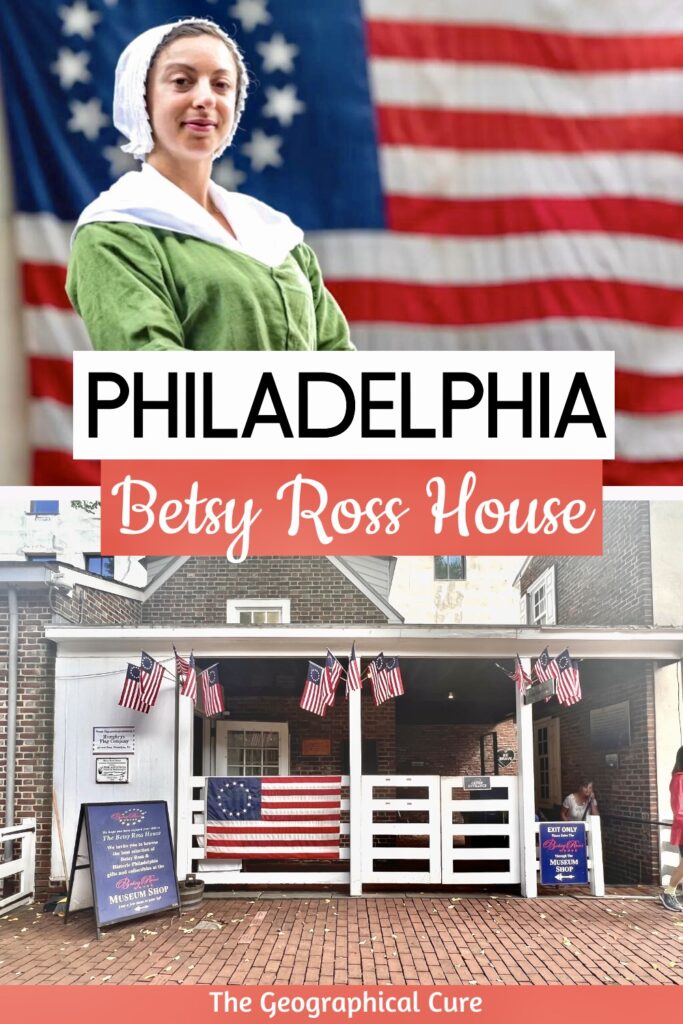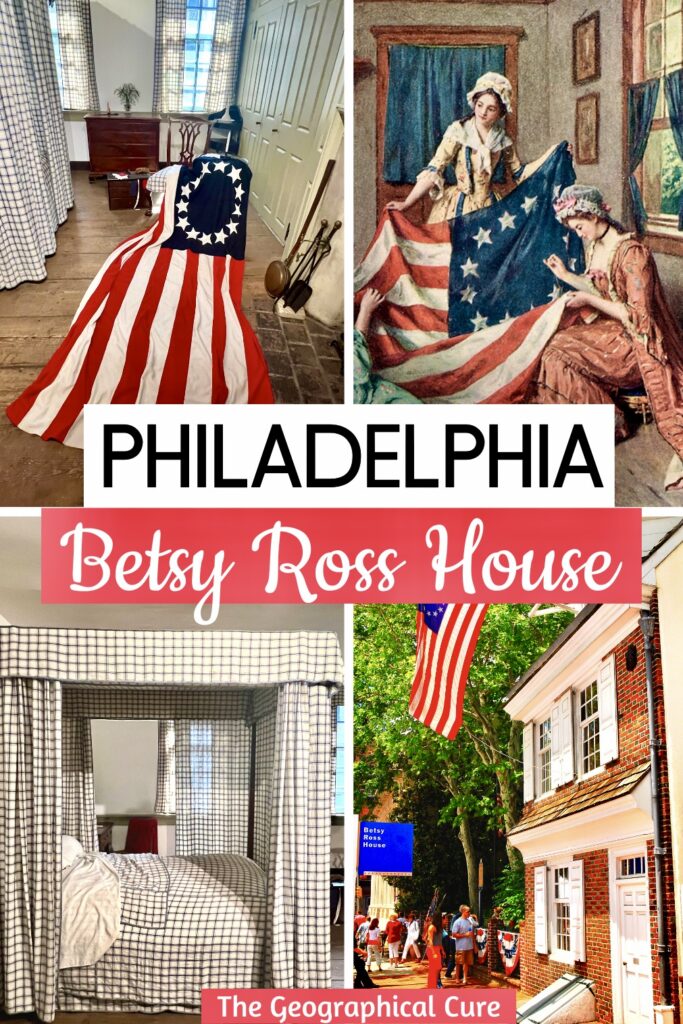Philadelphia is a city steeped in Revolutionary War history, boasting scads of landmarks that were pivotal in shaping the fledgling nation. One such site is the Betsy Ross House in Old City.
The house is a symbol of American independence and — possibly — the birthplace of the first American flag.
In this guide, I’ll explore the life of Betsy Ross, the flag controversy, the history of her house, and tell you what you’ll see during your visit.
>>> Click here to book a guided tour of revolutionary war sites
History Of The Betsy Ross house
Meet Betsy Ross
Born in 1752, Betsy Ross is a beloved figure in American history. She was a skilled and prolific upholsterer and seamstress. Along with her husband John Claypole, she started their first upholstery shop in 1774.
Her life was marked by resilience, including marrying outside her Quaker faith and marrying and burying three husbands.
During the Revolutionary War, Betsy staunchly supported the American cause. She earned the nickname “Little Rebel.”
She and her husband were active members of the Pennsylvania Society of the Cincinnati, rubbing shoulders with key figures of the Revolution.
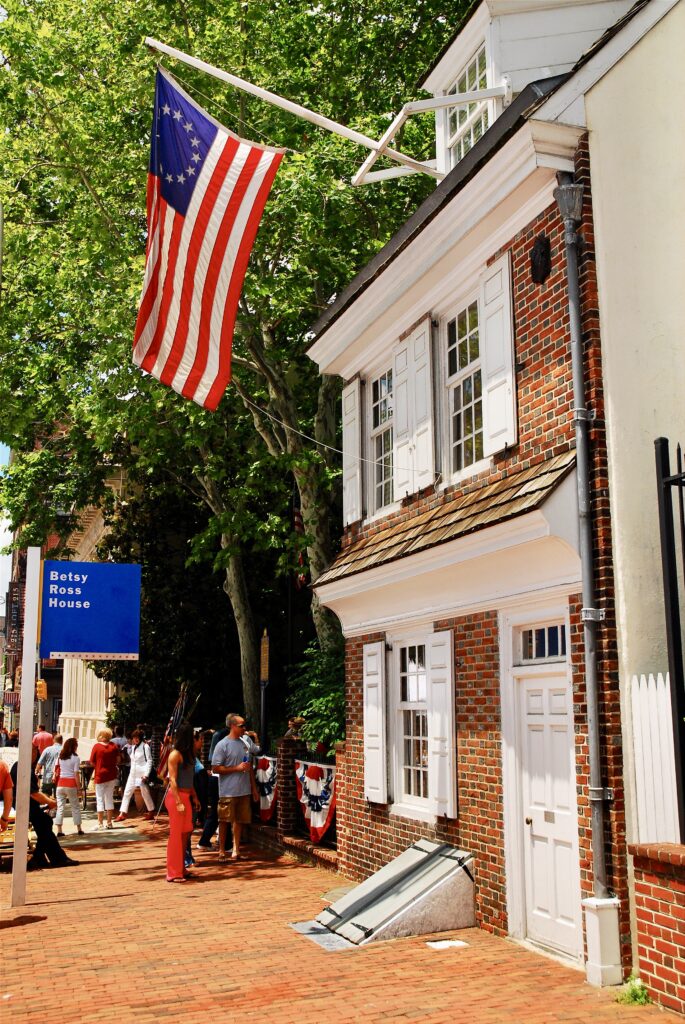
Through it all, Betsy was a successful entrepreneur. Over the course of her lifetime, she sewed hundreds of flags. Sometimes she had to keep this activity “under wraps” to avoid undue scrutiny from loyalists.
Betsy is most acclaimed for for creating the first American flag, a symbol of unity and freedom that endures today.
Betsy passed away at 84 in 1836. Decades later, her grandson William Canby shared the family’s flag-making story, which was published in Harper’s New Monthly Magazine in 1873.
In 1893, Charles Weisgerber immortalized Ross’ story in a giant painting called The Birth of Our Nation’s Flag.
After that, Betsy’s tale became an urban legend.
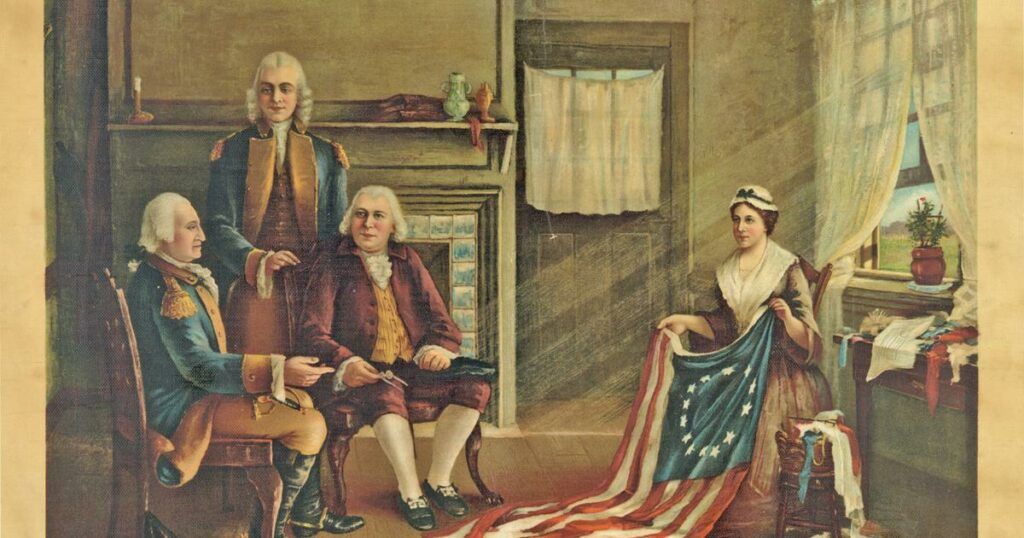
Did Ross Sew The Flag?
Did she or didn’t she sew the flag? It’s a compelling patriotic tale, but the actual evidence is sketchy.
Legend has it that in 1776, George Washington visited Betsy to discuss a new flag design. She made some changes, like putting the stars in a circle with five points instead of six.
In 1777, Congress adopted the Stars and Stripes as the official flag. Sadly, that original flag is lost to history.
Betsy’s flag-making feat only became widely known 100 years after her death. But there’s no solid proof, and many historians consider it a tall tale.

What we do know that weighs in her favor is this:
- Betsy did in fact sew flags;
- Betsy was a patriot and the men commissioning the flag needed to be sure of her loyalty;
- She knew Colonel George Ross, a signer of the Declaration of Independence;
- Betsy and Washington attended the same church and she made bed linens for his Mount Vernon estate in 1774, so she would have known him;
- Many of her relatives signed affidavits testifying to hearing details about the flag’s creation and that Betsy “made it with her hands;”
- According to museum historians, there is evidence that Betsy was paid a “substantial sum of money” for a flag she made on May 29, 1777 and the Continental Congress adopted the flag in June 1777.
It’s certainly plausible to argue that Betsy created the flag based on an interpretation of the available evidence. Many things weren’t documented back then. But one can’t make a call with any real certainty.
Still, the woman behind the legend is formidable and fascinating enough on her own terms, a rare female icon from that male-dominated era.
And true or not, the legend has persisted for more than a century. The early design for the American flag is still known as the Betsy Ross Flag.
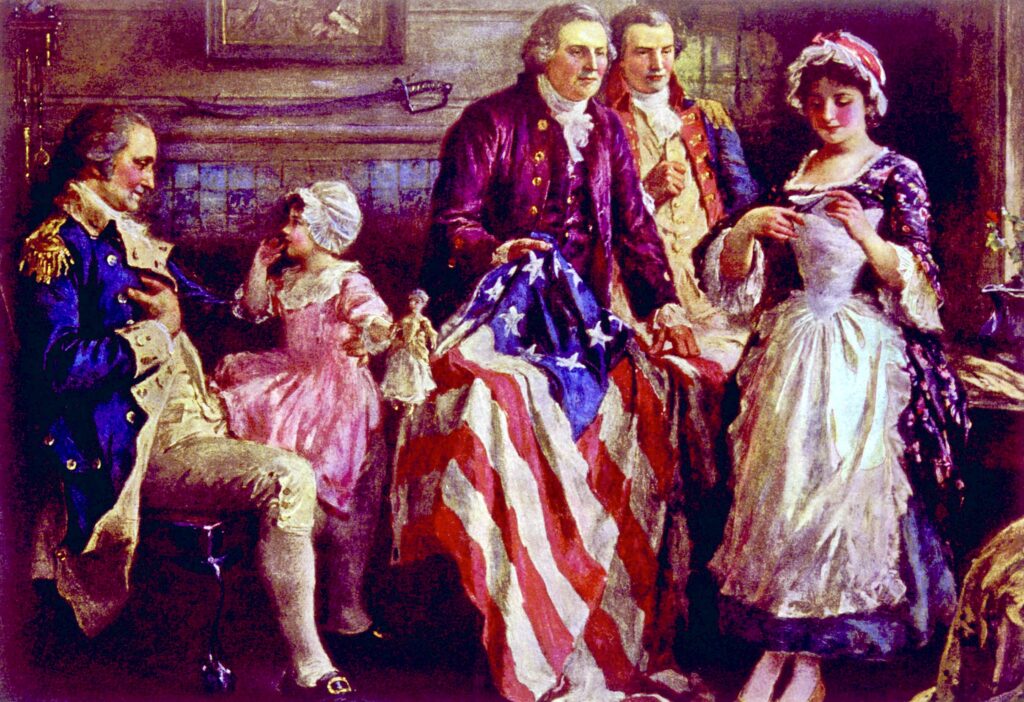
The Story of the Betsy Ross House
Built in 1740, the Betsy Ross House is a Georgian style house with a rich history. Betsy didn’t own the house. But she rented rooms there from 1773-86.
The house has witnessed the American Revolution, changed hands, and underwent various renovations.
By the end of the 19th century, many of the old Colonial buildings on Arch Street had been torn down.
In 1898, the Betsy Ross Foundation decided to raise money to save Betsy’s house from a similar fate. 2 million American contributed dimes. In exchange, they received a certificate featuring a small print of The Birth of Our Nation’s Flag.
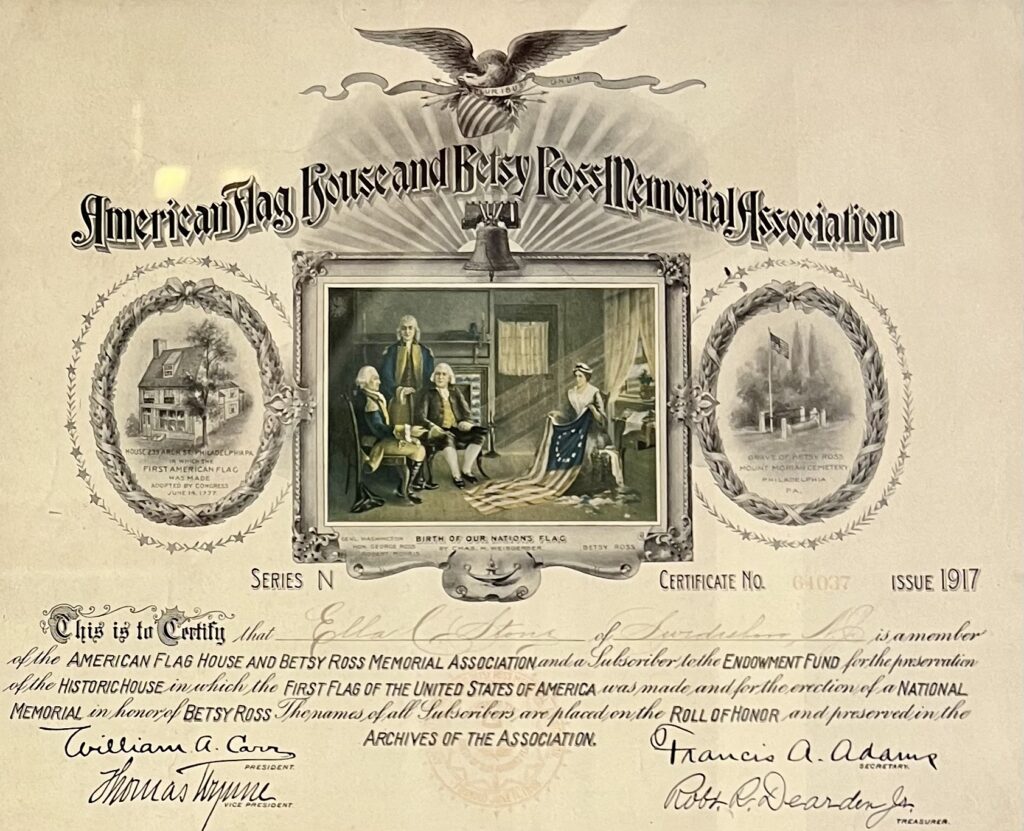
In 1937, the foundation opened its doors to the public as a museum.
But the house was also suffering from wear and tear. With further donations from a Philadelphia mogul, the prominent historic architect Richardson Brognard Okie was commissioned to do a major restoration.
He saved the original architectural elements whenever possible. He even found three fireplaces that were previously hidden.
The restoration efforts breathed new life into the houses, which was subsequently gifted to the city in 1941.
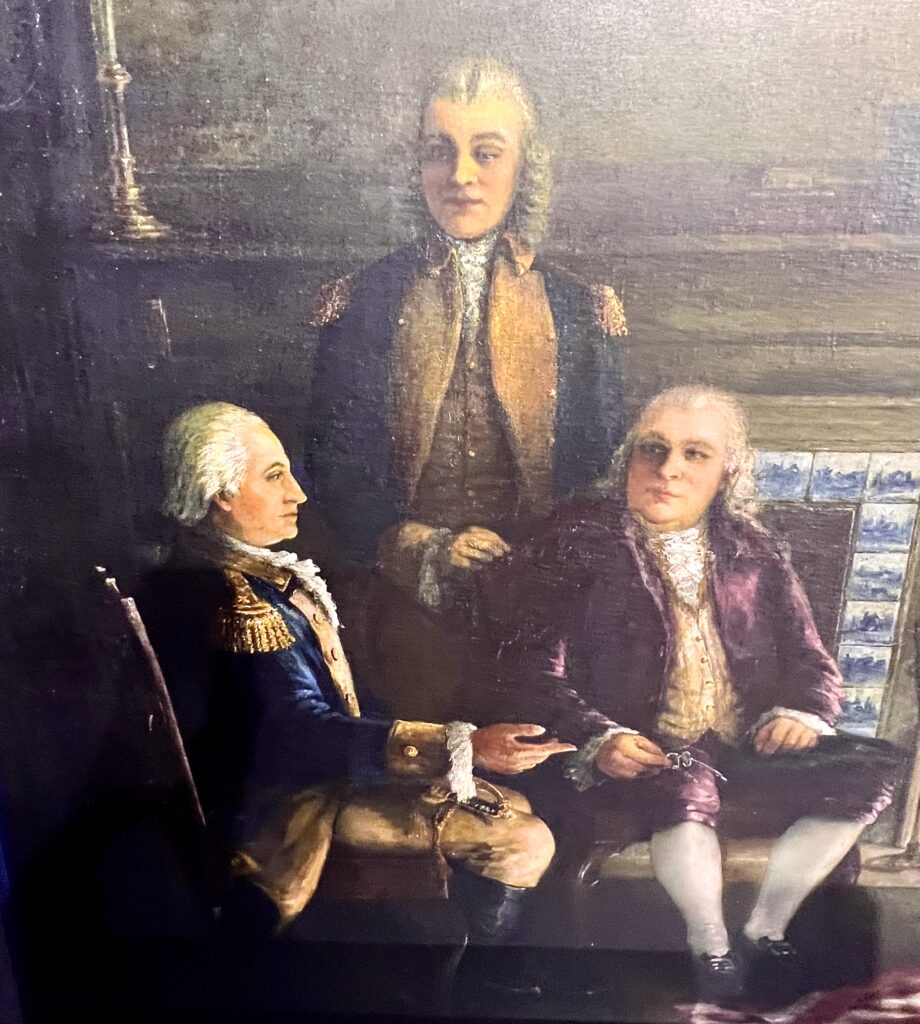
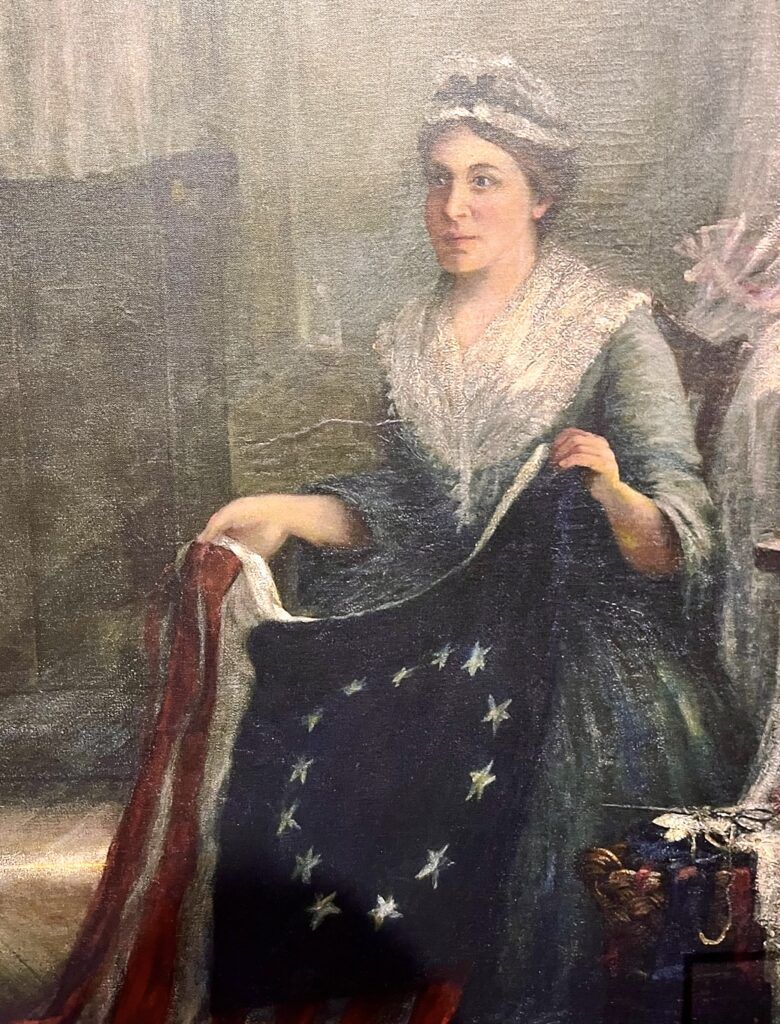
Guide To The Betsy Ross House: What To See
As you step inside the Betsy Ross House, you’ll travel back to the 18th century.
The museum is a meticulously preserved time capsule. Each room offers a unique glimpse into Betsy’s life and the era she lived in.
There are six rooms to visit over 3 and 1/2 floors. They are recreations of the family’s living arrangements and how they were decorated. You’ll find documents, artifacts, and historic details.
On the whole, it’s a lovely well-interpreted museum with plenty of information panels along the way.
>>> Click here to pre-book a ticket
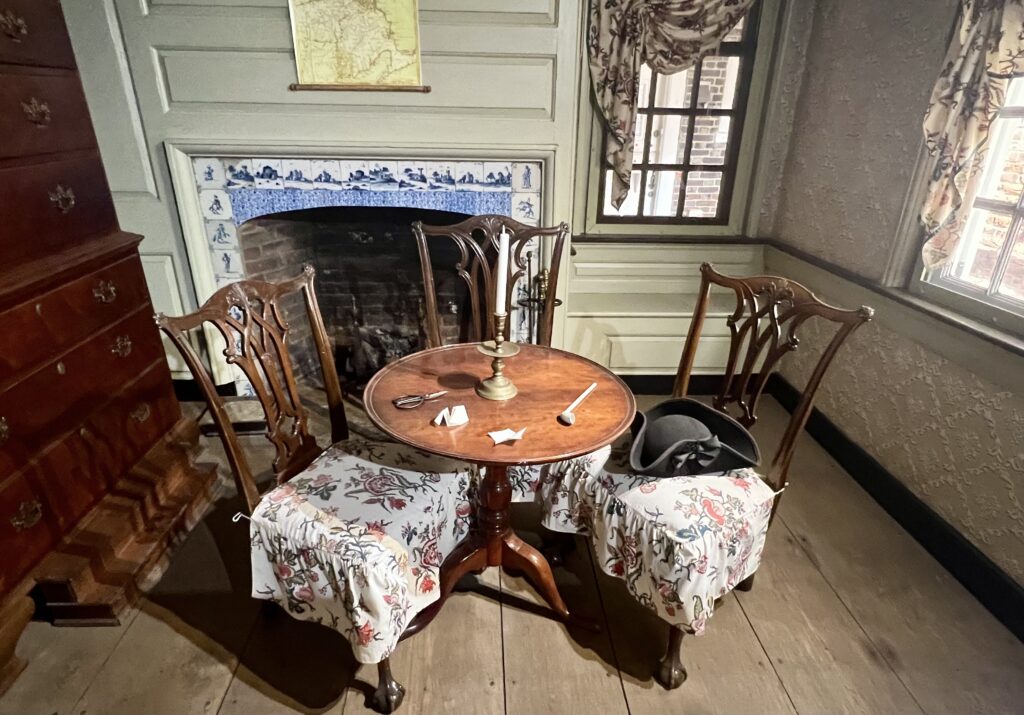
The Front Parlor
The front parlor is a typical Colonial era room. It’s furnished with period-appropriate furniture, decor, and accessories.
You can see wooden furniture, upholstered chairs, a cabinet, a tiled fireplace, and other pieces that reflect the style of the 18th century.
This was a place where family members would gather for various activities, such as conversation, reading, and socializing. They also welcomed prominent visitors and clients here.
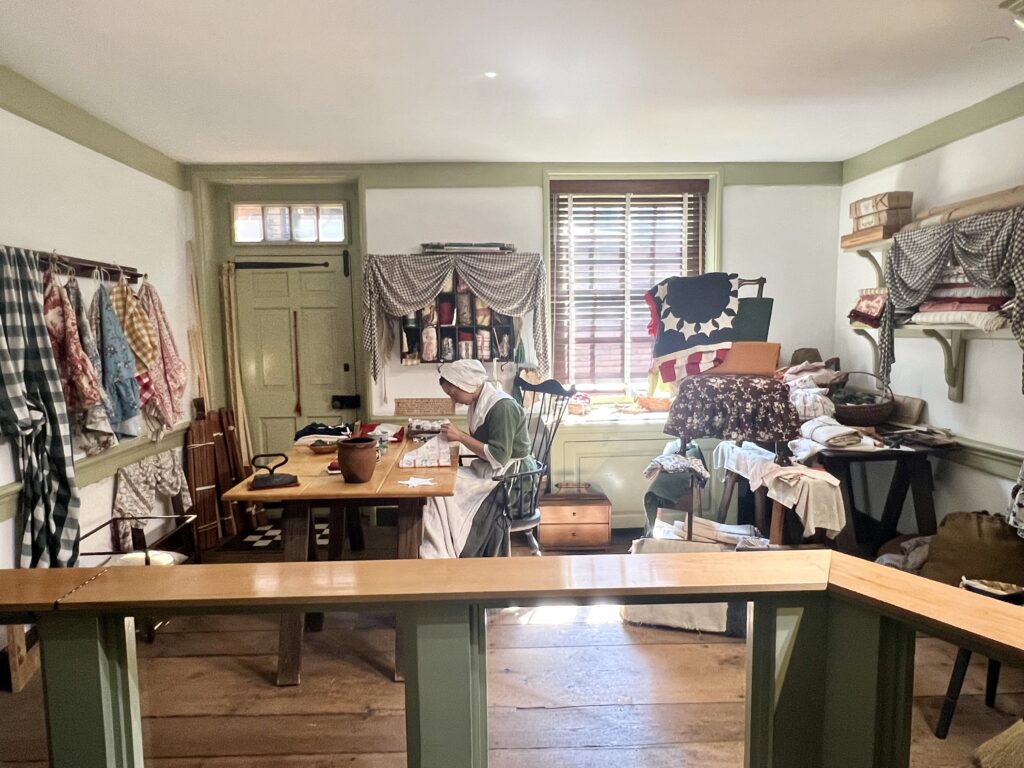
The Upholstery Shop
In this room, you can gain insight into Betsy’s craft as an upholsterer. It’s the only interpretation of an 18th century upholstery room in the United States.
Upholsterers performed a variety of tasks. They made curtains, blinds, tablecloths, slipcovers, and bed linens. They even sold and hung wallpaper. Betsy herself also did flag making, and advertised as a flag-maker throughout her life.
Her clients included George Washington, Benjamin Franklin, Benjamin Chew, Tench Cox, and the Pennsylvania state government.
There is no proof that her husband John was also an upholsterer, though he advertised that he was. It’s possible that Betsy simply used his name to conduct business.
There’s an actress dressed as Betsy in period costume in this room. And she’ll answer any questions you have, as if she was back in time. You may also get a lesson on how to cut the 5 point star.
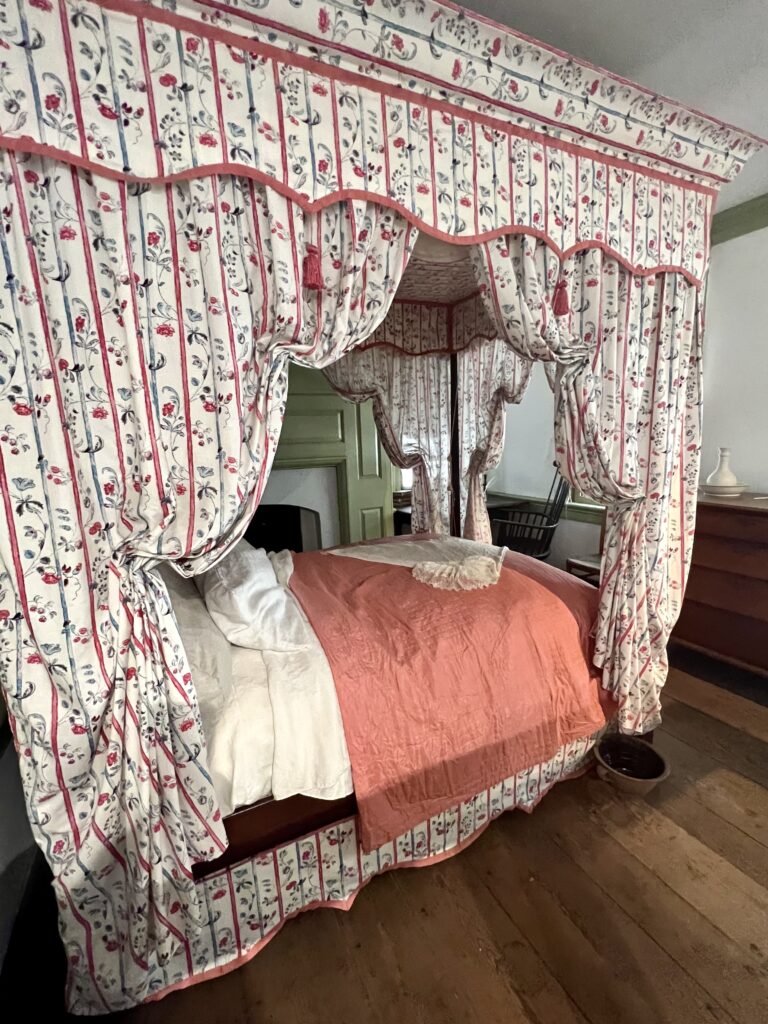
The Rear Bedroom
This is a beautiful bedroom decorated in period furnishing with a Colonial fireplace. It’s also known as the “Widow’s Chamber.”
The chintz bed linens are very elaborate. Bed hangings were extremely expensive in those days and a precious commodity.
The bedroom has been restored. And much of the plaster, chair rails, and baseboards date from the 18th century.
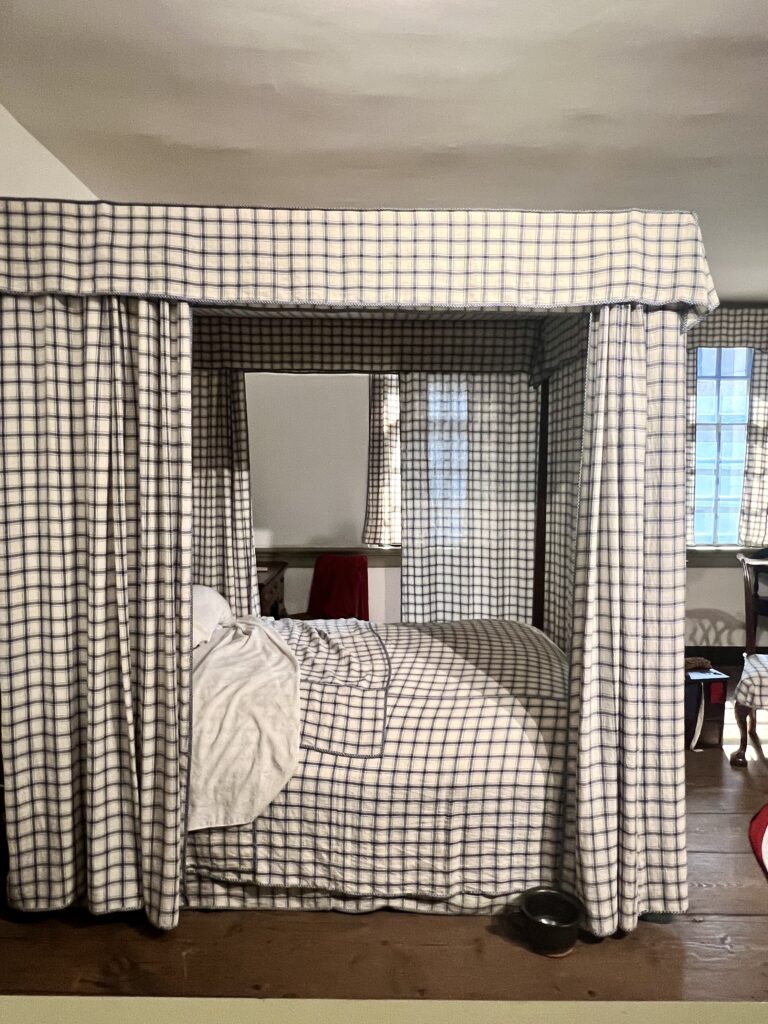
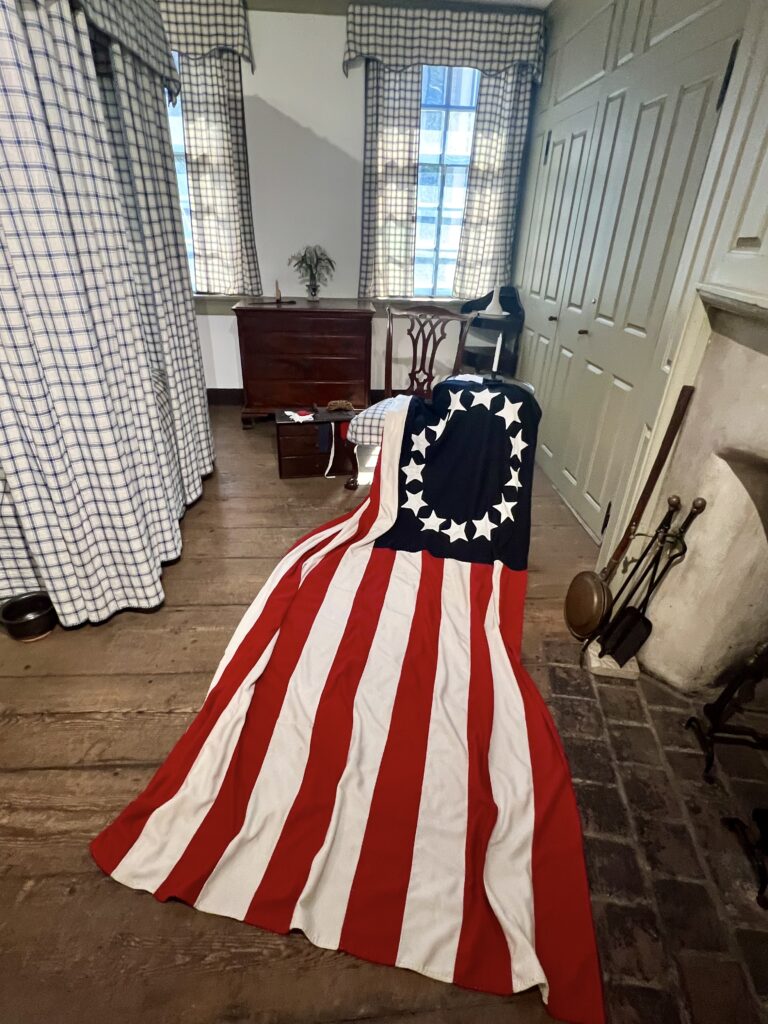
The Flag Room
This iconic room showcases the history and significance of the American flag.
It doubled as Betsy’s bedroom. This is where she may have made the bulky 10 foot flag and where she entertained friends.
There’s a replica of the iconic flag. In compliance with the Flag Code, there is cloth underneath the flag to keep it off the floor.
This personal space offers a peek into her daily life and the modest living conditions of her time. I loved the wide plank wooden floors.
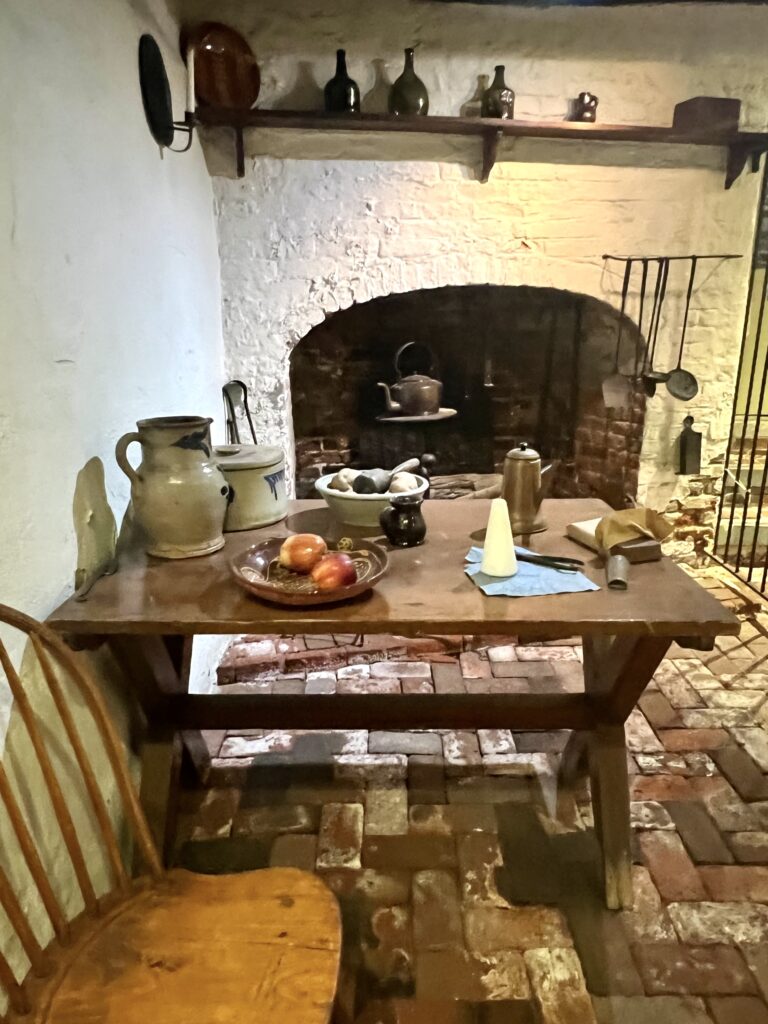
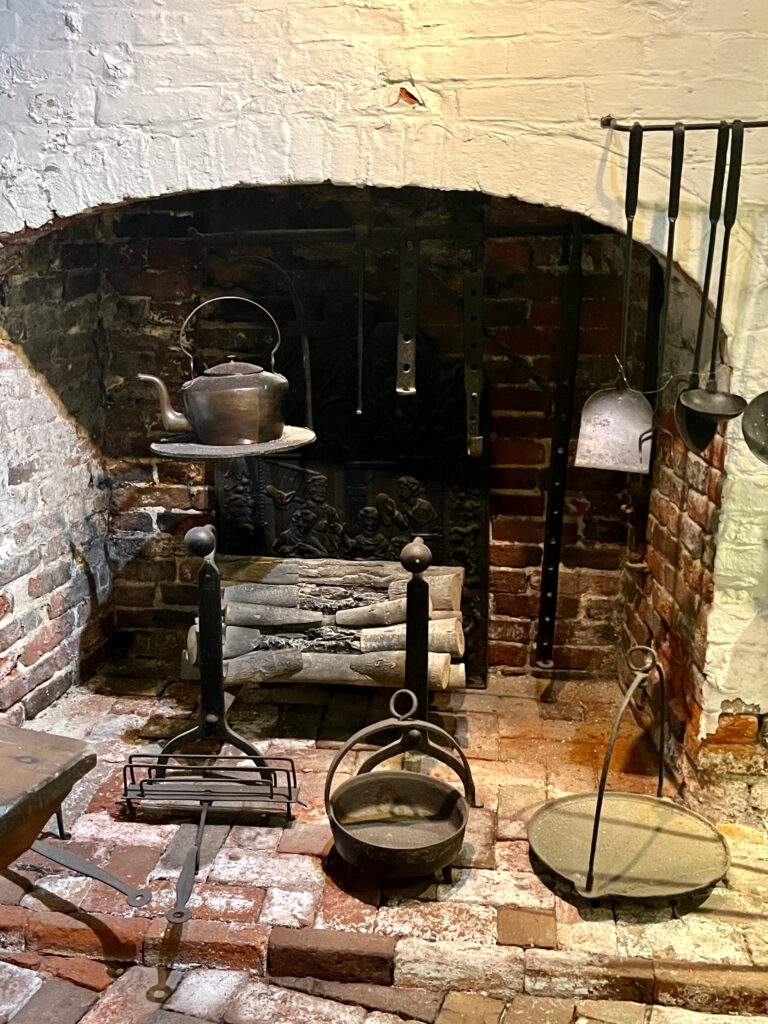
The Kitchen & Cellar
The kitchen is a colonial-era kitchen with brick floors, a large hearth, cooking implements, and other historical artifacts.
The open hearth was the centerpiece of the kitchen, and it was used for cooking, baking, and heating water. You can see how meals were prepared in the 18th century.
The wooden cabinets in the cellar were salvaged from other 18th century houses to cover the modern systems.
In the cellar, there’s also a kid’s kitchen. And a huge exhibit detailing Betsy’s recipes and explaining what she used to serve for meals.
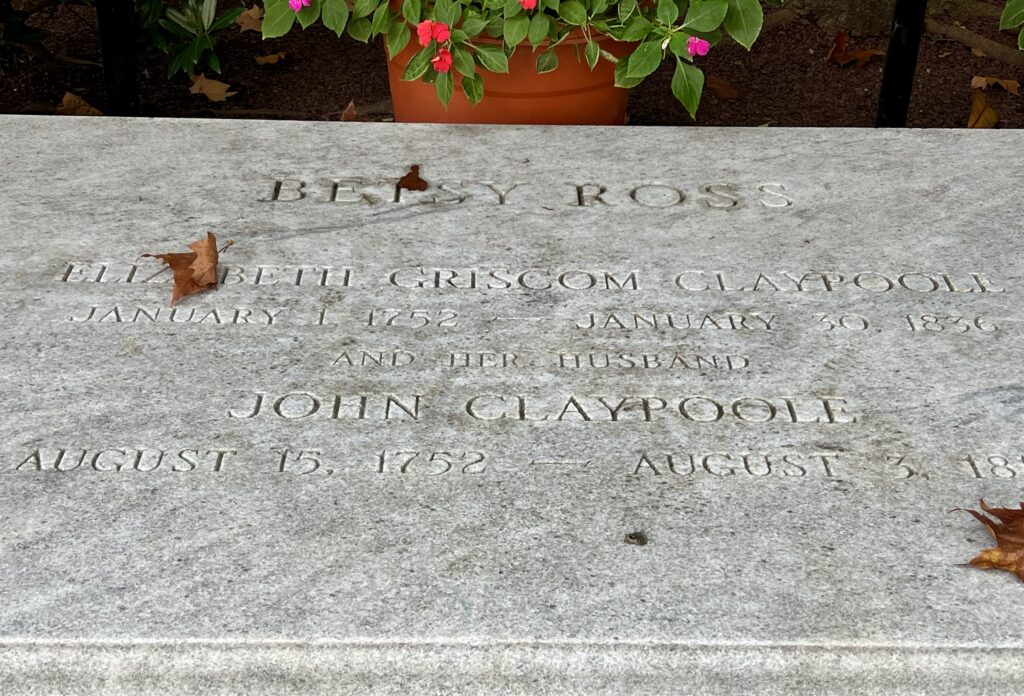
The Courtyard
You’ll end your tour in the charming courtyard. A building was demolished to make room for the courtyard and Betsy’s grave.
It features a beautiful garden and a statue with bronze cats. (They have no relation to Betsy, but were a gift from a board member).
You’ll also see Betsy’s marble-topped grave. She is buried with her third husband John Claypole. Betsy was originally buried elsewhere, but her remains were moved after the house was renovated.
The courtyard is free to visit. There are tables and chairs. You can sit down to relax or have lunch.
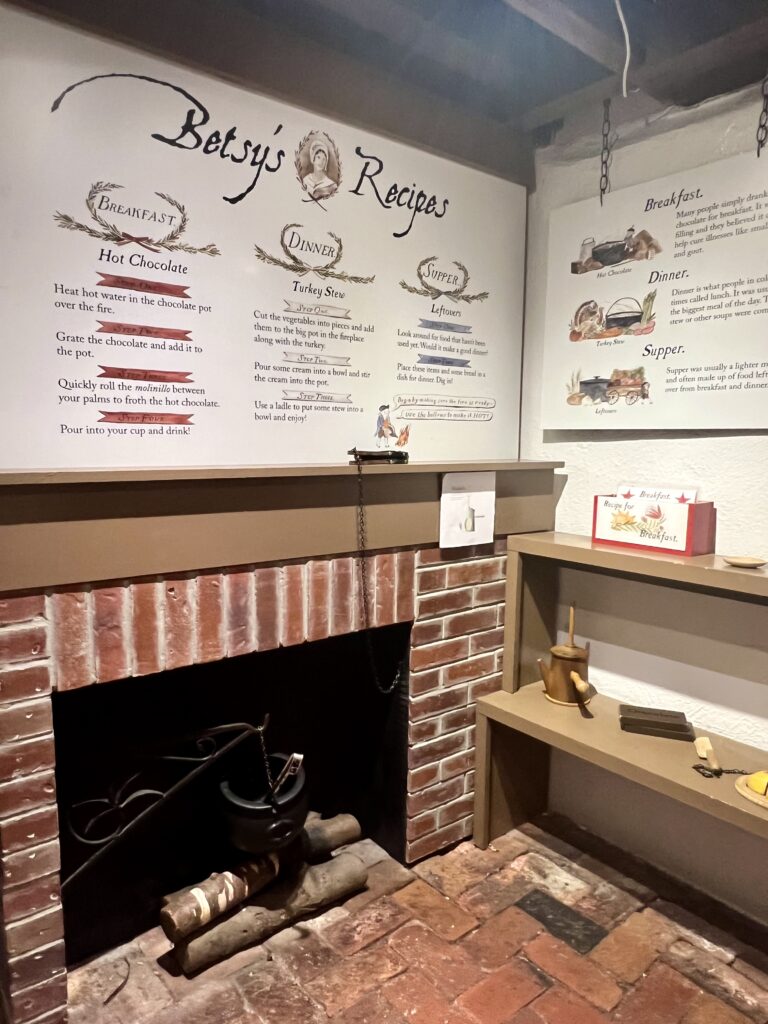
Practical Guide & Visiting Tips The Betsy Ross House
Before you plan your visit to the Betsy Ross House, keep in mind that it’s a popular destination, especially during peak tourist seasons.
Here are some must now tips to help you plan and make the most of your visit.
Address: 239 Arch St, Philadelphia, PA 19106
There is some limited on street parking and parking garages to deposit your car. The Hop On Hop Off Bus also stops there.
Hours: Open daily 10:00 am to 5:00 pm. December through February, the museum is closed on Tuesday.
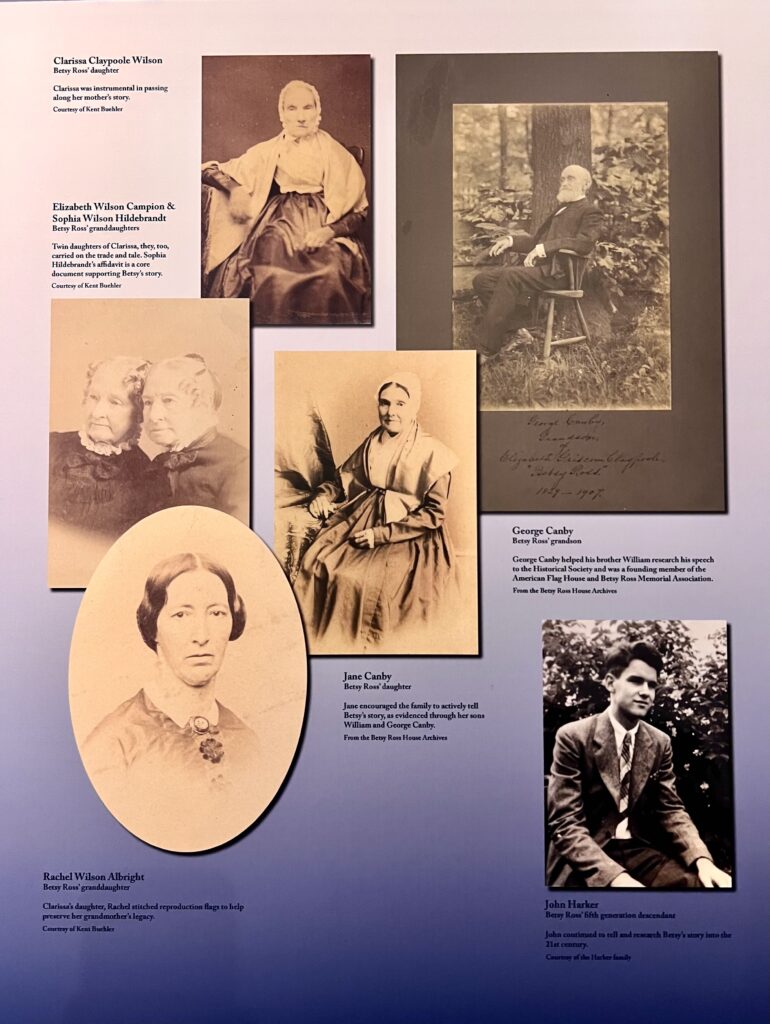
Tickets:
Prices are: adults: $10, $8 for children (ages 6-12), seniors (65+), students/military (with ID)
Click here to pre-book a ticket. Entry is included in the Philadelphia Go City Pass.
The audio guide is included and it’s excellent. It’s narrated by Betsy herself. It’s $2 extra, but it comes free if you are using the Go City Pass.
Pro Tip: The house is small and cramped. There are three very narrow steep staircases, one without hand rails. So try to visit at an off peak time to avoid crowds.
How Long To Spend: If you are pressed for time, you can breeze through the house in a half hour. If you read everything and listen to the entire audio guide, you will likely be there an hour.
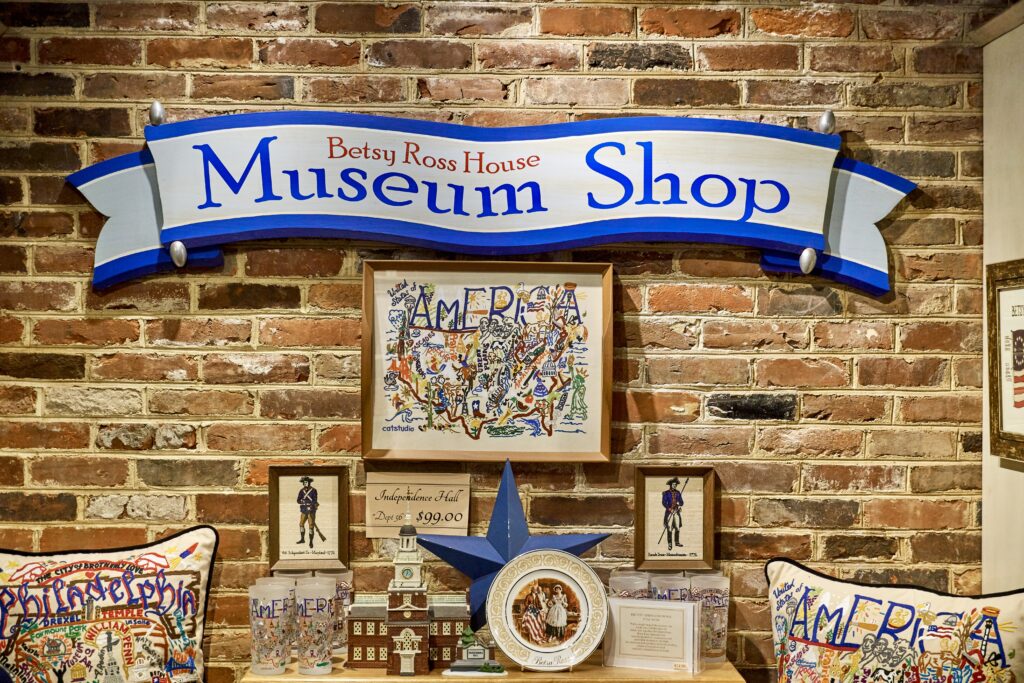
Museum Shop:
The museum shop at the Betsy Ross House offers a range of unique and patriotic souvenirs. Visitors can find items and memorabilia related to Betsy Ross, the American flag, and the Revolutionary period.
Some popular items include replica flags, books on American history, clothing with patriotic designs, and various souvenirs.
Is The Betsy Ross House Worth Visiting?
The Betsy Ross House isn’t just a museum. It’s a tribute to the unwavering spirit of an American icon. It’s a fun bit of history that takes you back in time to a pivotal period in history.
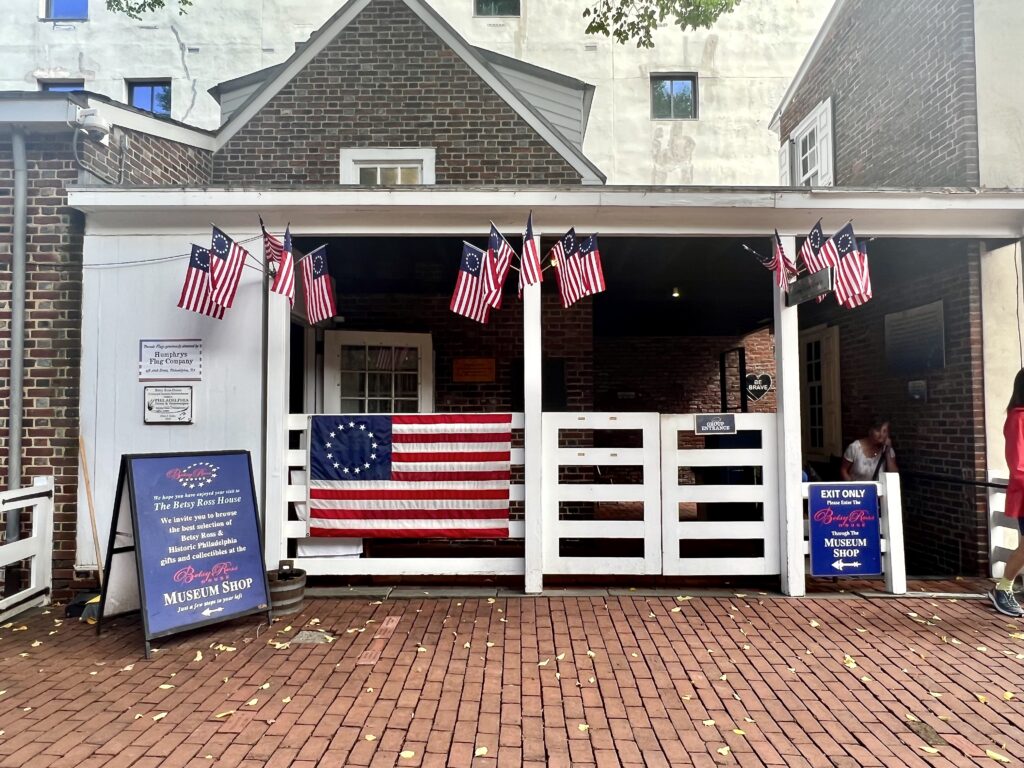
Though it’s a bit hard to separate fact from fiction when it comes to Betsy, I think her home is still worth a visit.
It’s fun to hear about revolutionary times. And Betsy was a savvy and interesting woman. Plus, I personally always like visiting an authentic period home.
Special Events: You should check the website for special events and talks. The house also hosts spooky twilight tours around Halloween.
What Else To See Near The Betsy Ross House
Betsy’s House is just a few steps away from Christ Church. It’s known as “the Nations’s Church.” This is where Betsy worshipped. You can also visit the Christ Church Burial Ground to see Benjamin Franklin’s grave.
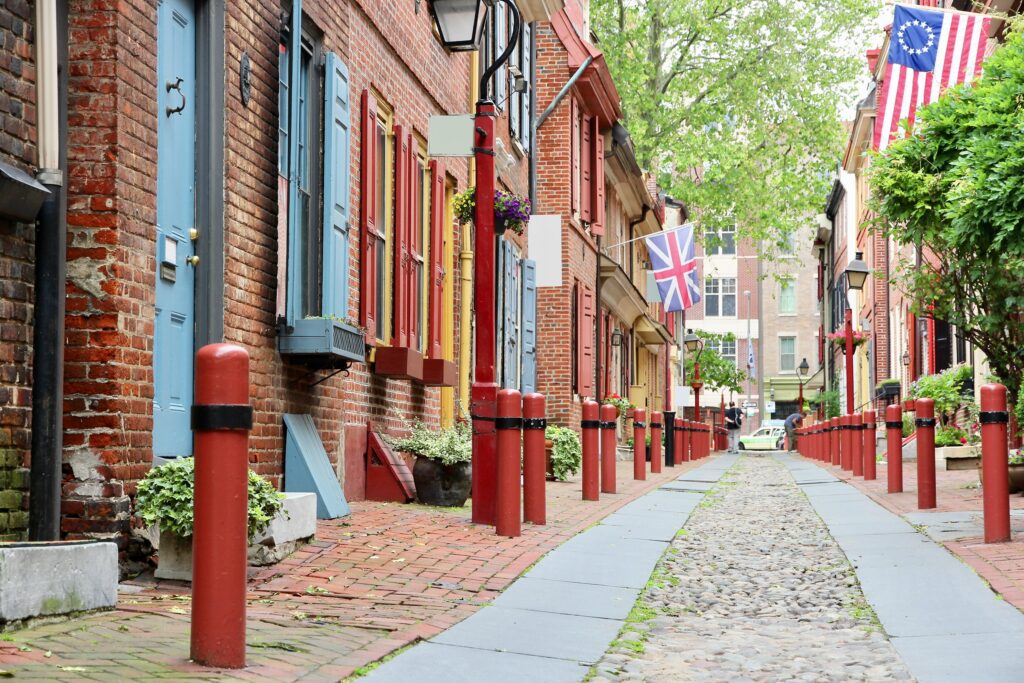
Just around the corner is the beautiful Elfreth’s Alley. And just down the street is the U.S. Mint and the National Constitution Center. Independence National Historical Park is just due south, about a 10-15 minute stroll.
I hope you’ve enjoyed my guide to visiting the Betsy Ross House. You may enjoy these other Philadelphia travel guides:
- 2 Days in Philadelphia Itinerary
- Top Attractions in Philadelphia
- Guide to Independence National historical Park
- Guide to the Philadelphia Museum of Art
- Guide to Philadelphia’s Rodin Museum
- Guide to Eastern State Penitentiary
- Guide to The Barnes Foundation
- Guide to the Mütter Museum
Pin it for later.

